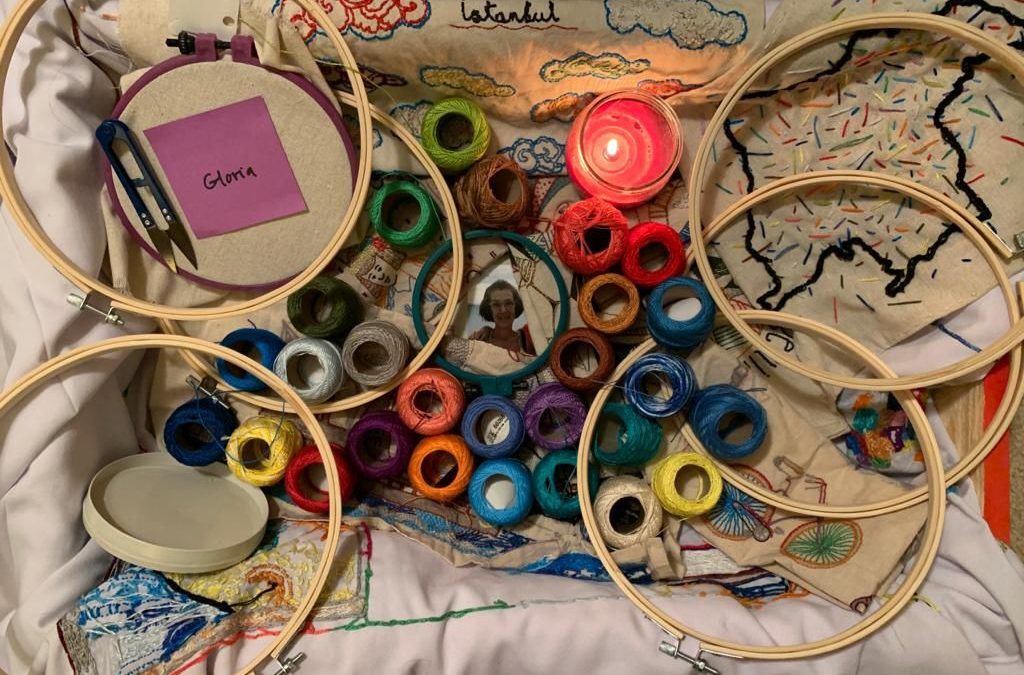In any other year, Carolyn Kallenborn would have spent this past week arranging wooden shadow boxes that celebrate the lost loved ones of around 200 Madison area residents.
A professor in the University of Wisconsin-Madison’s Design Studies Department, Kallenborn began the Community Altar Project in 2014, inviting the public to celebrate the Day of the Dead by turning wooden shadow boxes into altars to those they’ve lost. In a typical year, she’d have displayed around 150 altars in the Design Gallery at UW-Madison’s School of Human Ecology.
It’s a local adaptation of the Mexican tradition of inviting the dead to return for one night each year. Children return on Nov. 1, while adults return on Nov. 2. Different regions mark the holiday differently, but celebrations often include decorating sugar skulls, parading in costume or building public or private altars. Kallenborn, a textiles artist who grew up in St. Louis and has collaborated for nearly 20 years with artisans in Oaxaca, has taken special inspiration from the way the holiday is celebrated there. In addition to creating home altars, families adorn their graves with flowers and candles, packing the cemeteries to picnic and play music beside their loved ones.
The project is accepting photo and minute-long video submissions through Sunday, and small number of boxes are still available for pick-up, though participants can remember their loved one in any material or media they choose.
A rotating selection of submissions will be projected onto the windows of the Garver Feed Mill from 5 p.m. to 9 p.m. each evening through Nov. 15 — though most visible after dusk — and the complete collection will be projected in larger form onto the side of the building each evening from Friday, Nov. 6 to Sunday, Nov. 8. Kallenborn hopes the large projection will be awe-inducing, but viewers can also take in the exhibit in a more intimate way online through the project’s Facebook page, where she hopes to feature one altar a day for the coming months.

